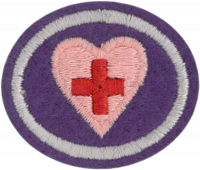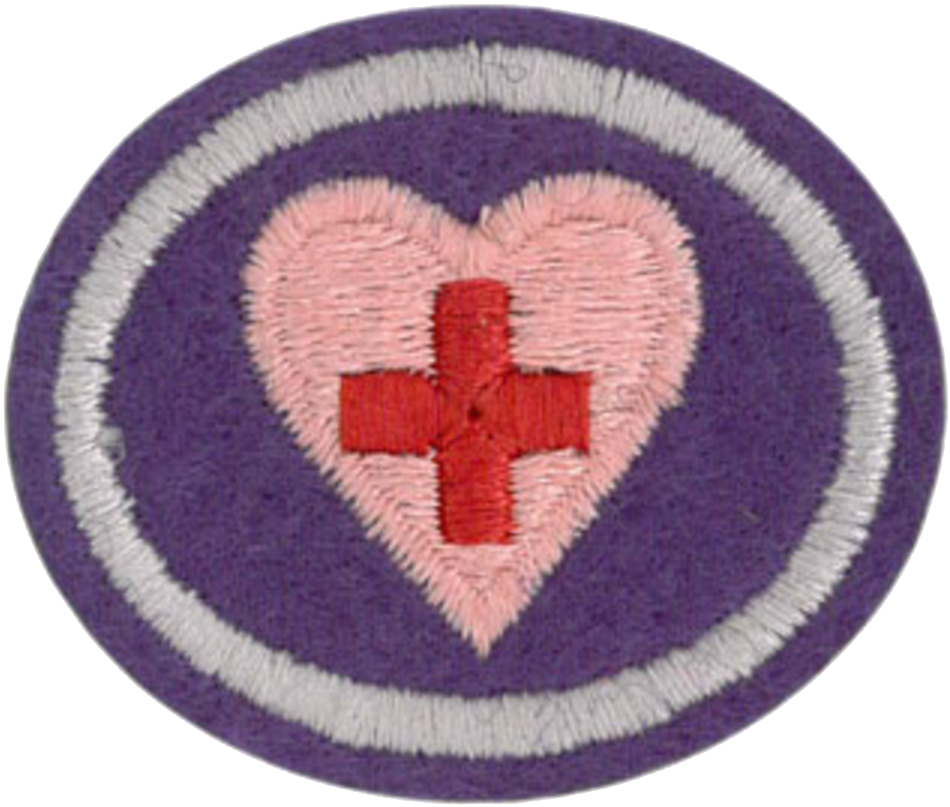AY Honor First Aid Requirements
Instructor Required
1. Learning first aid means that you may be called to assist someone who is facing life or death outcomes. Memorize at least two texts that you could share with someone in a physical and spiritual crisis while waiting for professional medical assistance.
Complete Requirement 2 OR 3-29.
2. If residing in the United States or another country in which Red Cross or American Heart instruction is given, take the Red Cross First Aid class and satisfactorily pass the Red Cross Examination in First Aid and receive your certificate. Or take First Aid through the American Heart Association and satisfactorily pass the First Aid test and receive your certification. In countries that use St. John Ambulance, take the class and pass the examination and receive your certificate.
3. Describe how to recognize emergency possibilities where first aid may need to be provided until more advanced help comes and the responsibility for providing first aid.
4. Explain the importance of making sure the scene is safe before administering first aid. Brainstorm a list of dangers that could occur in a variety of situations.
5. Learn the contact information for emergencies in the area where you live. List the information necessary for contacting them in emergencies. Watch an educational video on how to contact the emergency services or interview an EMT worker or EMS operator.
6. Know the examples of when it is necessary to call the emergency contact number. For each of the following situations, role-play making an emergency call (do NOT call the number while role-playing!).
- Victim does not respond to voice or touch
- Confusion, level of consciousness
- Chest discomfort, possible heart attack
- Signs of stroke
- Breathing problems
- Severe injury or burn
- Severe bleeding
- Seizure
- Paralysis
- Poison over part of the body
- Electric shock
7. Explain the importance of wearing gloves and other Personal Protective Equipment (PPE) when giving first aid.
- a. Demonstrate putting on gloves and removing them safely.
- b. Understand the follow-up importance of washing with soap and water, and demonstrate how to wash your hands properly.
- c. Explain why it is important to wash skin, eyes, nose and/or mouth if body fluids have contacted any of these areas.
8. Know the possible first aid responses to the following breathing emergencies and demonstrate:
- a. How to help a person use an inhaler.
- b. The appropriate response for choking emergencies.
- c. The appropriate response for anaphylactic shock.
9. Understand what CPR is and explain the basics of using chest compressions as needed.
10. Know and explain the difference between sudden cardiac arrest and heart attack. What are the symptoms of a heart attack?
11. What is fainting? Know and demonstrate the first aid procedures to assist someone who has fainted.
12. Know the signs and symptoms of a person with low blood sugar and what first aid actions to take.
13. What is a stroke? What are the signs and symptoms?
14. What is a seizure? Role-play how to help a person during and after a seizure.
15. Describe the difference between minor bleeding and severe bleeding. Know when to call the emergency contact number for bleeding. Practice the proper response for controlling bleeding using dressings and pressure.
16. Know when and how to properly use a tourniquet. Using a chart, mannequin or other instructional device, demonstrate where the various pressure points are on a body and how to properly apply pressure.
17. Know the causes of shock and demonstrate proper treatment.
18. Explain the first aid procedure in assisting someone for each of the following:
- a. With a nosebleed
- b. Bleeding from the mouth
- c. With a tooth emergency
19. Using a peeled grape or boiled egg, demonstrate how to help with an eye injury - both physical and chemical.
20. How do you stop external bleeding from a puncture wound? Explain why you should not remove any object stuck in the body.
21. What do you do when there is a traumatic amputation emergency? Practice the correct way to handle the amputated part.
22. Know the proper treatment for head, neck, or spinal injuries. Under what circumstances should you move or not move a person with a possible head, neck, or spinal injury?
23. If advanced emergency assistance will not be available for a while, you may need to apply dressing, bandages and splints to be able to move a victim safely. Know and demonstrate the following bandages and splints:
- a. Open and closed spiral bandage
- b. Figure-eight bandage
- c. Fingertip bandage
- d. Cravat bandage for head wounds
- e. Upper arm splint
- f. Forearm splint
- g. Ankle splint
- h. Arm sling
24. Describe the proper treatment for burn injuries and electrical injuries.
25. List the actions to take in the case of bites (animal, insect, snake, spider, etc.) and stings (scorpion, insect, etc.).
26. Know the proper first aid for tick bites.
27. Discuss with your instructor how to recognize the symptoms for heat-related emergencies and cold-related emergencies. Know and demonstrate the proper responses for each.
28. Know what to look for to identify a suspected poisoning victim. Discuss the importance of scene safety with your instructor. Why should you stay out of an area if you see multiple people who may have been exposed to poison? Learn the number for poison control in your area.
29. When a victim must be moved or carried to safety, know the following rescue carries and demonstrate each of the following:
- a. Shoulder drag
- b. Blanket drag
- c. Two-person carry
- d. Carry by extremities
- e. Improvised litter
- f. Three-person hammock carry
- g. Litter carry
Note: Whether obtaining certification or completing the requirements listed above, each youth learning first aid at this level should know where the club’s, school’s and/or church’s first aid kit is stored and how to use it. All first aid kits should include gloves and eye protection along with the regular supplies.


